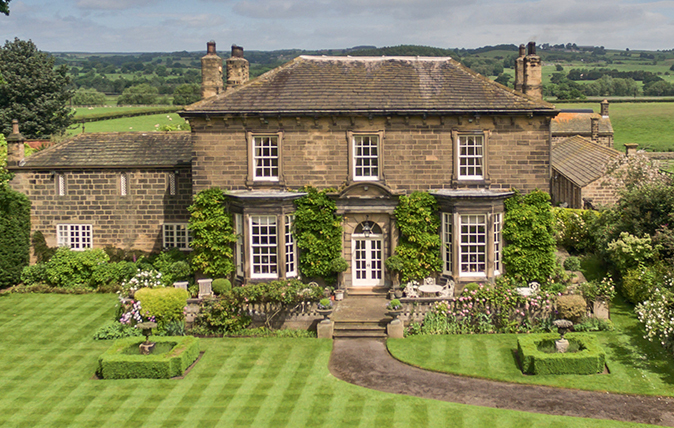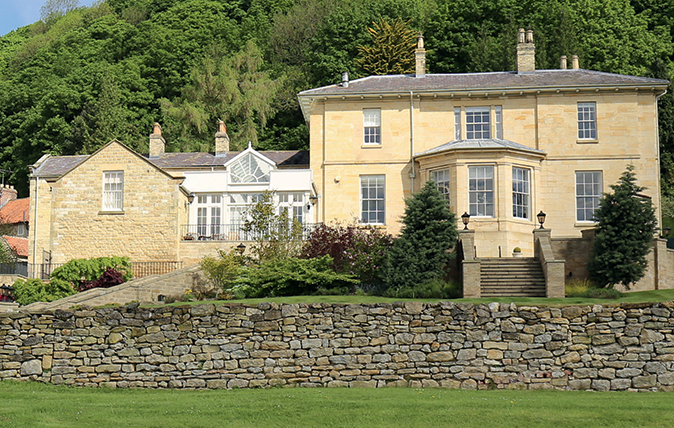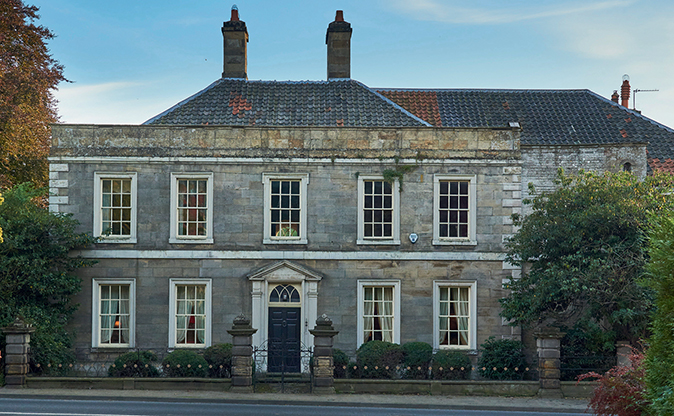Historic houses for sale in Yorkshire
Residents might prefer that only they know about these three historic houses, but the secret’s out.


So far, the season of mists and mellow fruitfulness hasn’t produced much in the way of stellar country houses for sale, but, in God’s Own Country, nobody seems particularly bothered. As Ben Pridden of Savills in York (01904 617820) explains: ‘Life just goes on up here and the further north you go, the less concerned people seem to be about the possible effects of Brexit; after all, no one knows how it’s all going to play out anyway.’
Yorkshire people are intensely proud of their county’s architectural heritage and nearly all the best houses tend to end up in the hands of Yorkshire owners or owners who become ‘naturalised’ over time. Mr Pridden reports ‘really good interest’ in the sale—for the first time in 44 years and at a guide price of £3.5 million— of secluded Arthington House (Fig 1) with 65 acres of gardens, grounds and grassland near the ancient West Yorkshire village of Arthington, roughly 10 miles equidistant from Harrogate and Leeds.
The neighbouring village of Pool-in-Wharfedale boasts panoramic views of local landmarks—such as the splendid Arthington Viaduct, Otley’s Chevin ridge and Almscliffe Crag—many of them famously recorded in a series of watercolours by the young J. M. W. Turner. With its magnificent stables, barns and outbuildings arranged around a courtyard in perfect symmetry, Arthington projects the grandeur of the majestic, 1,000-acre Harewood estate, of which it was once a part. Arthington was built in 1854 for an engineer working on the Leeds and Thirsk railway—but in the Georgian rather than the Victorian vernacular —and had been rented out for many years when its current owners, John and Jill Springall, bought it in 1972.
Although tired, the house had retained much of its original interior, including beautiful mouldings, fireplaces and original folding window shutters, although inappropriate Victorian plate-glass windows were swiftly replaced by smaller Georgian-style panes.
Other original Georgian features sourced by the owners included wrought-iron balustrades saved from a house in Harrogate, large stone balls recovered during the demolition of a church in Leeds, which were used to top the gateposts, and flagstones used to pave the front terrace that were salvaged when the pavements of Otley were replaced with tarmac. The Springalls’ passion for the family home that they will be desperately sad to leave is reflected in the cheerfully flamboyant decor of the interior. As in all the best Georgian houses, the main rooms are exceptionally light, elegant and well-proportioned and, at Arthington, have compelling views of the garden, park or central courtyard. They include impressive entrance and staircase halls, three main reception rooms, a garden room, five bedrooms and three bathrooms, plus two further potential bedrooms.

The pretty village of Oswaldkirk, on the southern slopes of the Hambleton Hills, 20 miles north of York, straddles the border of the North York Moors National Park to the north and the Howardian Hills AONB to the south. The Harrogate office of Strutt & Parker (01423 561274) is handling the sale of pristine, Grade II-listed The Old Rectory (Fig 2), Oswaldkirk, which nestles on the south-facing bank of the Hambleton Hills, overlooking the Coxwold-Gilling gap. Originally offered with 29 acres of land, the immaculate former rectory is being remarketed at a guide price of £3.95m, with 11 acres of gardens, grounds and paddock.
According to its listing, the house was built in the early 18th century and remodelled in 1836 by Richard Sheppard for the then rector, the Rev George Henry Wandesford Comber. Plans survive of the new rectory design, dated 1836, which shows the house, deemed ‘architecturally competent’, as having ‘three main elevations with classical proportions, and sitting well within its grounds (with) the interior almost intact’.
Exquisite houses, the beauty of Nature, and how to get the most from your life, straight to your inbox.
The house is decorated throughout in creamy neutral colours that emphasise the height and light of its elegant staircase hall and three fine reception rooms, of which the sitting room, with its signature bow window over-looking the spectacular south-facing terrace and grounds beyond, is particularly noteworthy. Steps from the hall lead down to a handsome Smallbone breakfast kitchen and a splendid orangery with French doors leading down to the terrace.

The graceful curved main stair- case leads to the first floor, which boasts six bedrooms (three with en-suite bathrooms), including a fabulous master suite. True to the Yorkshire tradition of keeping things in the family, Edward Hartshorne of York agents Blenkin & Co (01904 671672) is handling the sale of his parents’ historic home, Grade II*-listed Aislaby Hall (Fig 3) in the hamlet of Aislaby, a long village of stone houses built on a hillside overlooking the esk, three miles west of the ancient seaport of Whitby.
On the market for the first time in 20 years—and only the third time since 1742, according to the agent— romantic Aislaby Hall is on offer at a guide price of £1.25m for the rambling country house with a cottage and stable, all set in three acres of walled and parkland gardens; further land is available by separate negotiation.
According to its listing, the hall was originally built in the mid 18th century for one Thomas Hayes, with a wing of 1896 incorporating remains of an earlier house; the wing was extended and a porch added on the garden side in 1906. Setting the scene of the hall in its pomp, in January 1857, the Hull Packet and East Riding Times advertised the forthcoming auction sale of ‘the Mansion House called Aislaby Hall, with the pleasure grounds and about 14 acres of Old Grass Land, with the Manor or Lordship of Aislaby, with the Moor and extensive Stone Quarries thereon, the property of Robert Noble esquire, situated at Aislaby, three miles from the populous and fashionable watering-place of Whitby, and one mile from the Sleights Station of the Whitby and Pickering branch of the North eastern Railway’.
At the time, the house, ‘built of freestone and slated’, contained ‘dining and drawing rooms, Breakfast room or library, Kitchen and Scullery on the first floor, five best Bedrooms on the second floor, and Servants Attics above; also a large room adjoining (formerly used as a chapel) over which an additional suite of bedrooms has been lately erected, tog- ether with a Billiard room’. Times may have changed at Aislaby Hall since then, but this hallowed building still retains the aura of an earlier, more gracious era.

